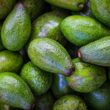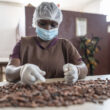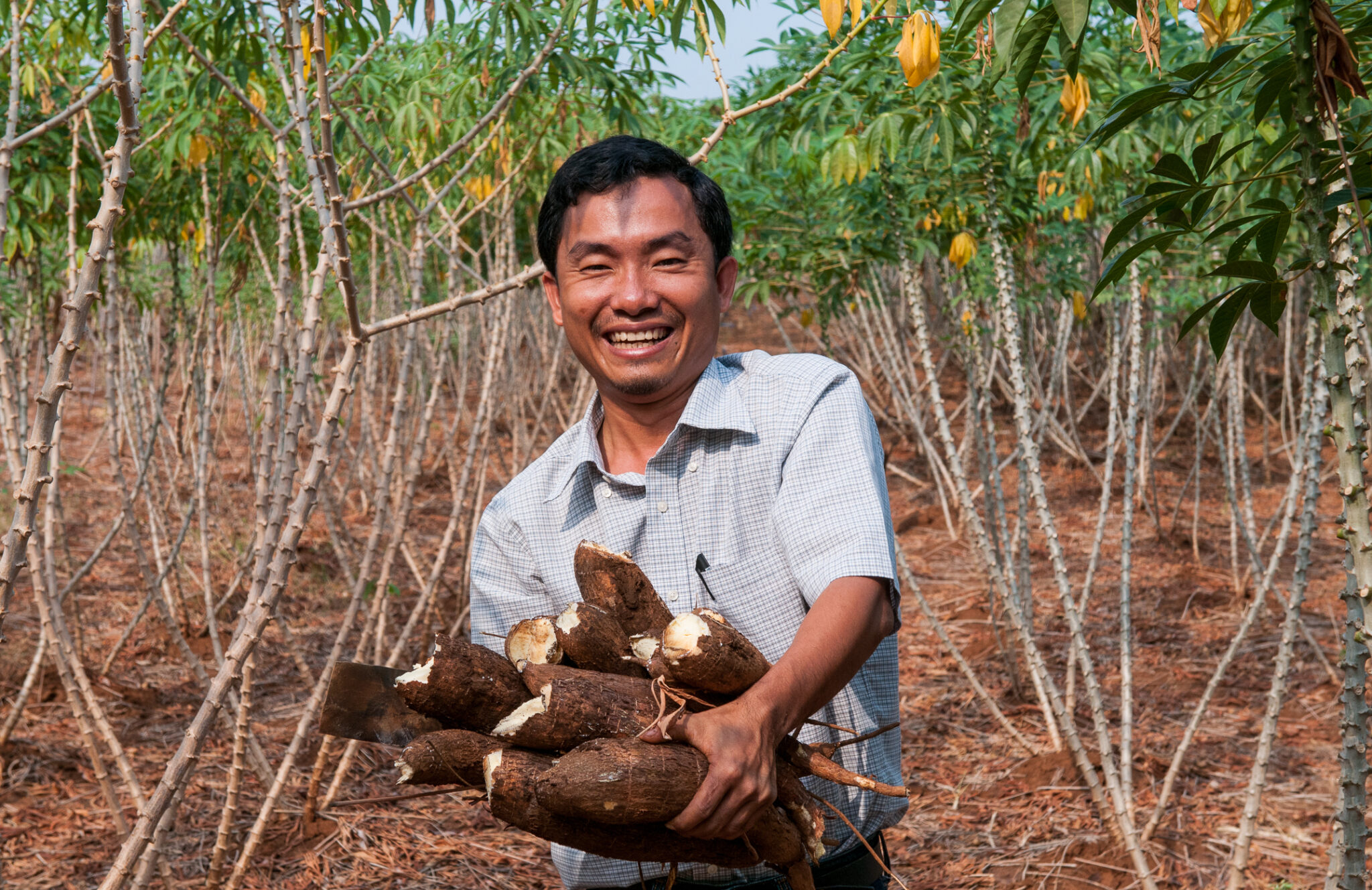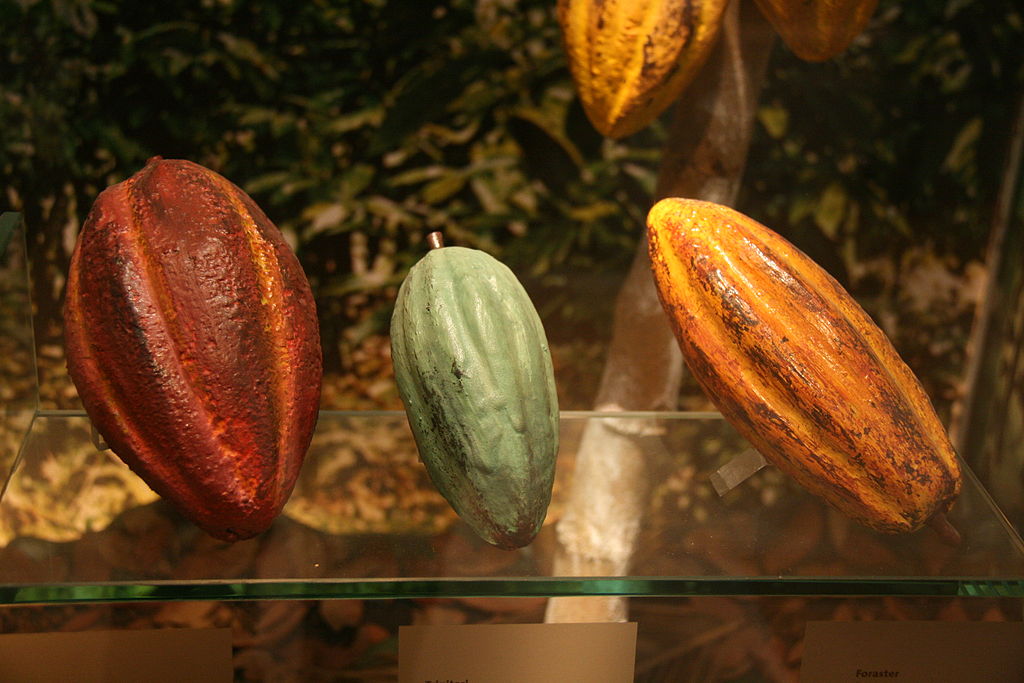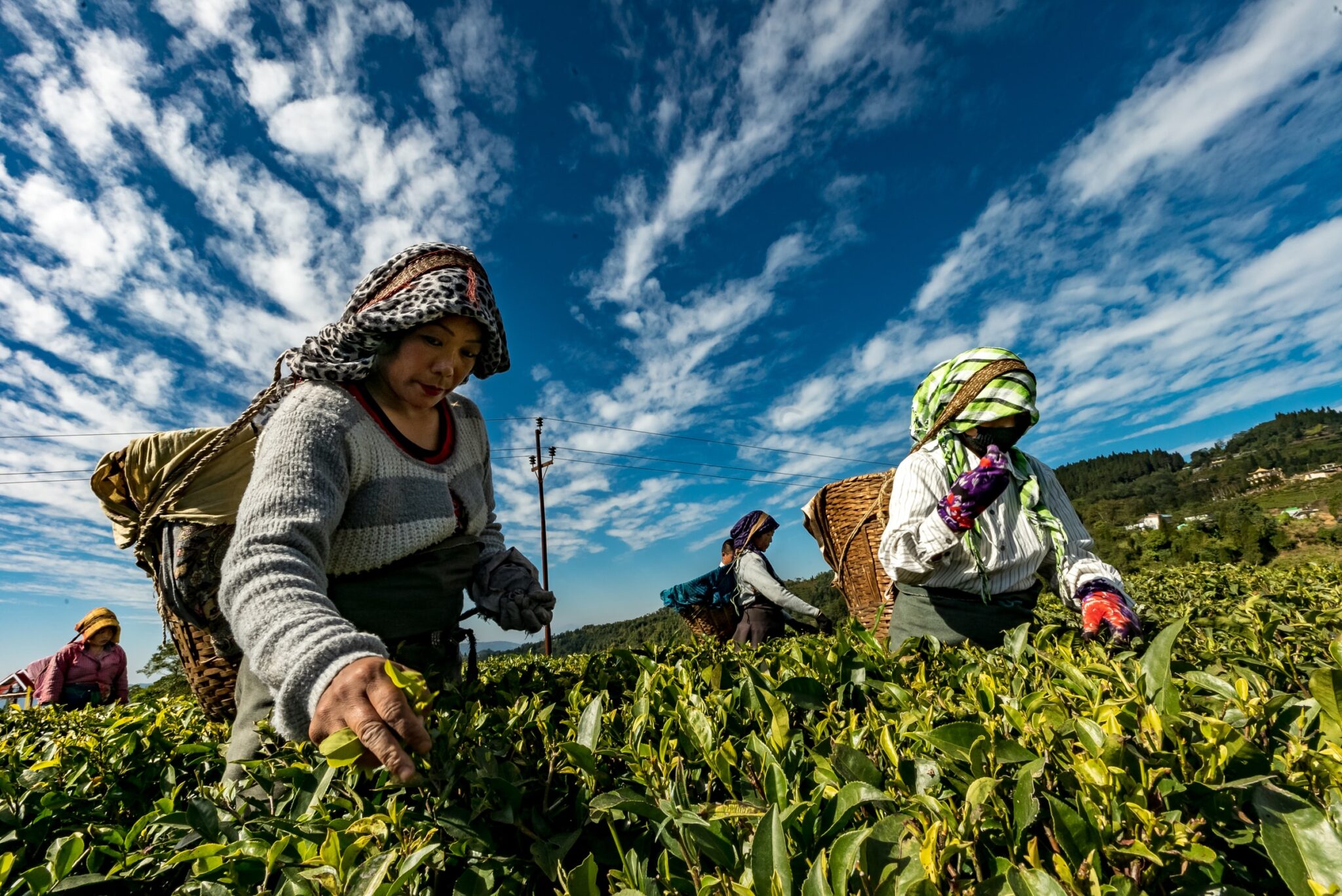What Is Cassava?
Cassava (Manihot esculenta) is a woody shrub native to the Amazon in Brazil, South America, where its domestication began about 5000-7000 years BC. Also called yuca in Spanish, mandioca in Portuguese, and manioc in French, cassava produces edible starchy tuberous roots that have become a key ingredient in many African homes.
Demand For Cassava
Cassava, alongside rice and maize/corn, is one of the top three sources of carbohydrates in the tropics. It is primarily consumed boiled, but large quantities are also used for the production of cassava starch, called tapioca, which has further applications as food, animal feed, and even industrial processes such as alcohol production and even ethanol production from cassava starch.
There are many recipes to cook cassava, but the most common forms include boiling or baking it, due to its complex carbohydrates structure. In addition to its tuberous roots, the cassava leaf is also a notable source of protein and is consumed in some homes as vegetables.
Taxonomy Of Cassava
The taxonomy of cassava is as follows:
- Kingdom: Plantae
- Phylum: Spermatophyta
- Class: Dicotyledonae
- Order: Euphorbiales
- Family: Euphorbiaceae
- Genus: Manihot
- Species: Manihot esculenta
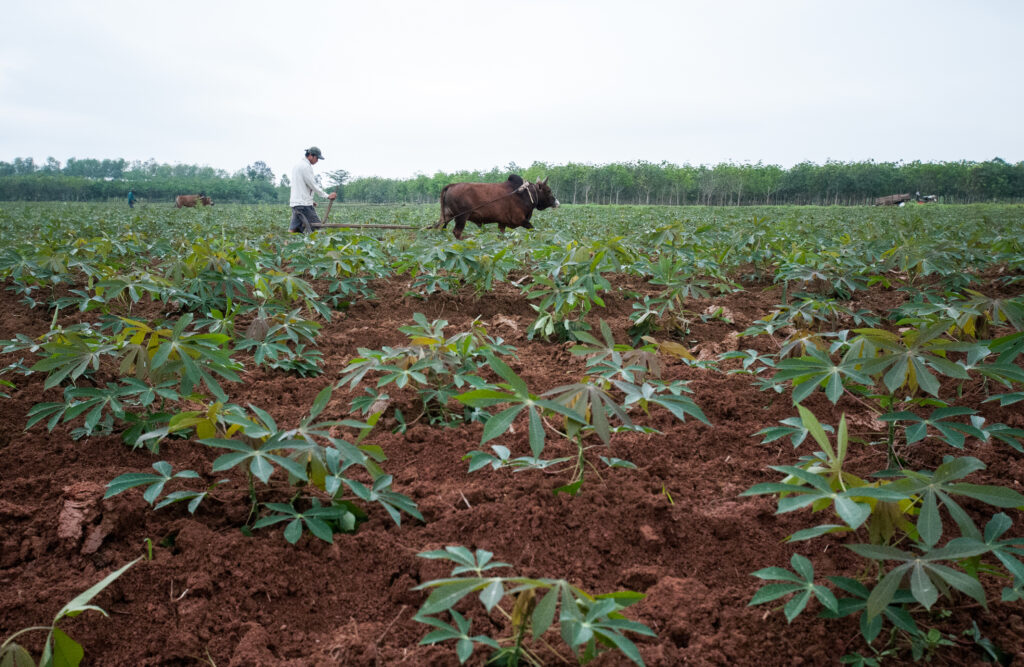
Production Of Cassava
Currently, Nigeria is the world’s largest cassava producer with almost 60 million tons per year. The global yearly production reaches 278 million tons, with the top five producers as follows:
- Nigeria 59.5 million MT
- Thailand 31.7 million MT
- DRC 30.0 million MT
- Brazil 17.6 million MT
- Indonesia 16.1 million MT
Growing Conditions
With its ecological diversity, cassava is subject to varying temperatures, precipitation (rainfall), day length, and sunshine. Cassava requires an average annual temperature of 25°C-29°C for optimum growth and production, although it can tolerate a wider range of temperature from 16°C-38°C.
Cassava is a drought-resistant crop and can grow in semi-arid regions and low nutrients soils where cereals and other crops will not do well. In sandy to light soils, the roots thrive easily. Cassava has high tolerant rate so it can grow in soils with low pH. Stony soils or soils with hard layers are not suitable for growing cassava.
The optimum rainfall for growth is about 1000-1500mm per year. Even when rainfall is not enough, cassava will still do well.
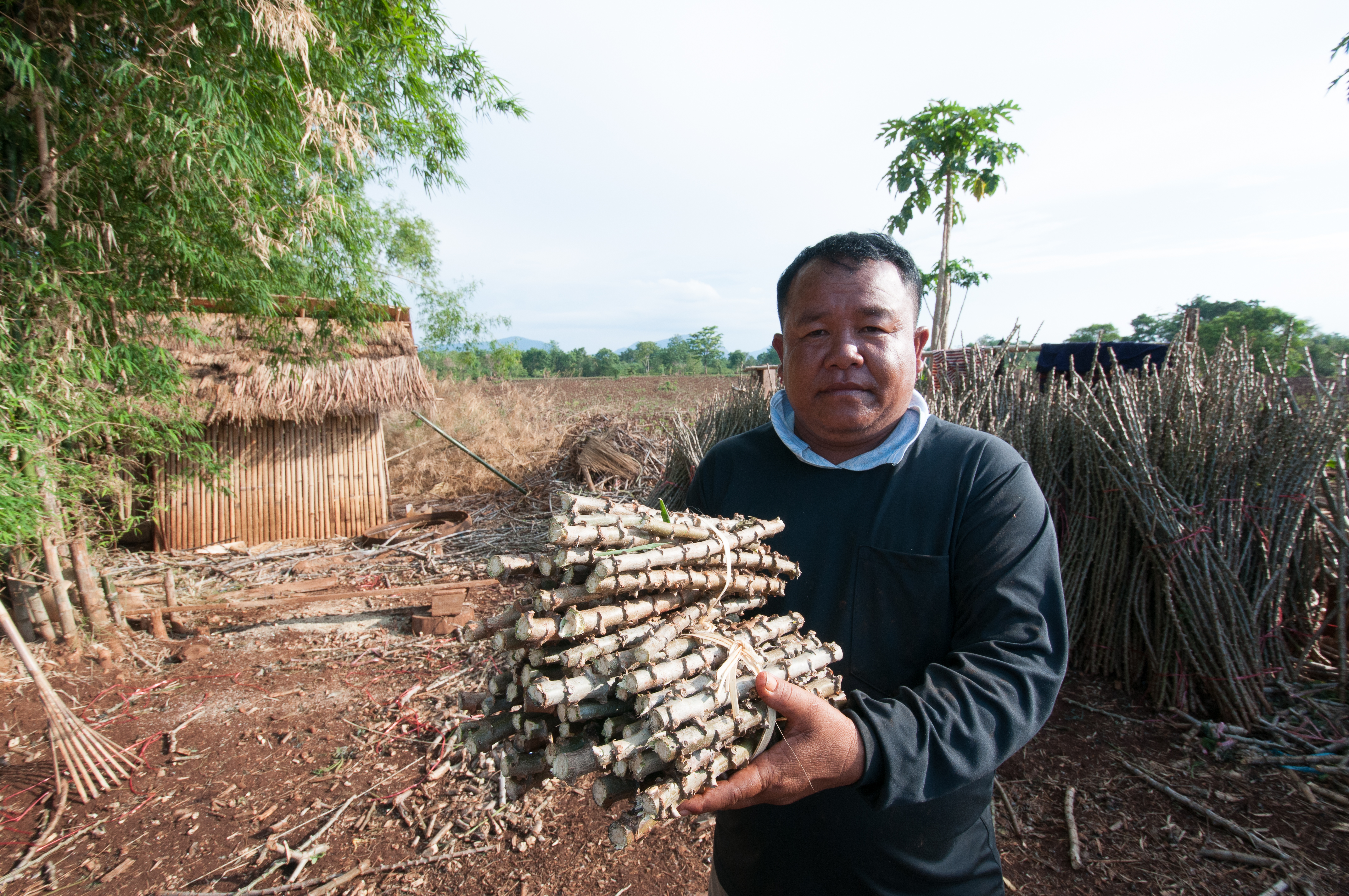
Propagation Of Cassava Crops
Cassava is mostly propagated by vegetative means through stem cuttings. This makes its multiplication rate slower than seed propagated cereals. To plant cassava on a large expanse of land, it is important to get quality stems to harvest quality roots. The problem with this approach, however, is that the bulkiness of the stems makes it difficult to transport.
In addition, there are also limitations in order to minimize pests and diseases; quality stems from one location cannot be taken to another location so as to reduce the risk of transferring diseases and pests to the new production area.
Finally, an additional concern is the perishability of the stems, since cassava stems need to be planted within a short period of time from cutting.
Diseases Affecting Cassava
The major diseases affecting cassava are cassava mosaic disease (CMD), cassava bacterial blight and cassava anthracnose disease.
Cassava Mosaic Disease (CMD)
This viral disease is endemic to sub-Saharan Africa. Symptoms include chlorosis, mosaic, and mottling. Chlorosis is the yellowing of leaf tissue due to the lack of chlorophyll. Mottle is when patches of different patterns start showing on the leaves of plants. Sometimes, it can cause the leaves to fold and look tattered.
Bacterial Blight
This disease is caused by proteobacterium Xanthomonas axonopodis pv manihotis. It is transmitted by infected plant material or infected farm tools. The mode of transmission is by rain splash, movement of people, animals, and machines from infected to healthy fields. The effect of this disease on yield varies on factors like location, variety, weather conditions, planting time, and quality of the planting medium.
Control of Bacterial Blight
Healthy plant materials should be used. Plants should be fertilized in moderate quantity especially with potassium. Any diseased plants and infected residues should be uprooted and burned. Planting should be done at the end of the rainy season.
Pests Affecting Cassava
The main pests affecting cassava are mealybug, rodents, and whitefly.
Mealybug
Mealybugs feed on the leaves, stems, and petioles and inject toxins that cause the leaves to curl and eventual withering of the leaves. It can be controlled by avoiding the movement of plant materials from one region to another or removing and burning infested plants.
White fly
It consumes cassava leaves and this makes it the most damaging pest affecting cassava producing regions. It carries the vector of cassava mosaic disease.
Rodents
Rodents persistently distort the production of cassava as they dig the soil to remove tubers for their consumption which in turn reduces the quality of the roots. To control rodents completely is difficult, thus many farmers resort to setting traps in order to control their population.
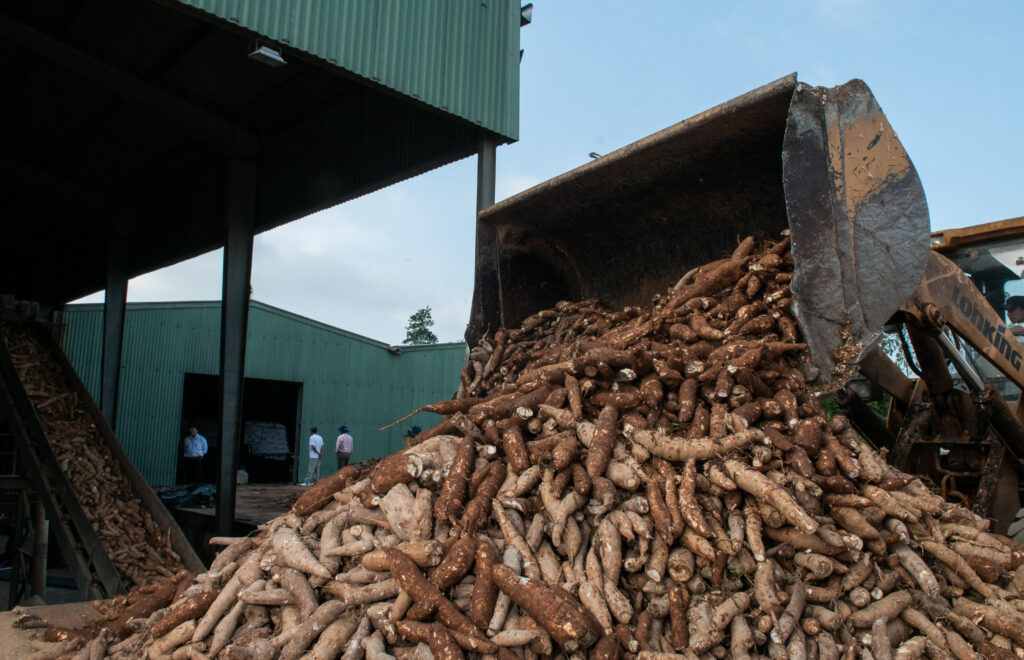
Cassava Storage
Given its perishability, cassava must be handled with care after harvesting to reduce the rate at which the root deteriorates. Although there are techniques that can extend the the roots from deteriorating, they are just for a limited time. Traditionally, to keep the roots for a number of days, it is better to harvest the roots with stems (say 25cm from the root), this keeps it strong for some days before finally transporting the roots to where they will be processed.
Also, harvesting in the rain should be avoided as this affects the perishability of the roots by making them damp which in turn triggers increased microbial activities.
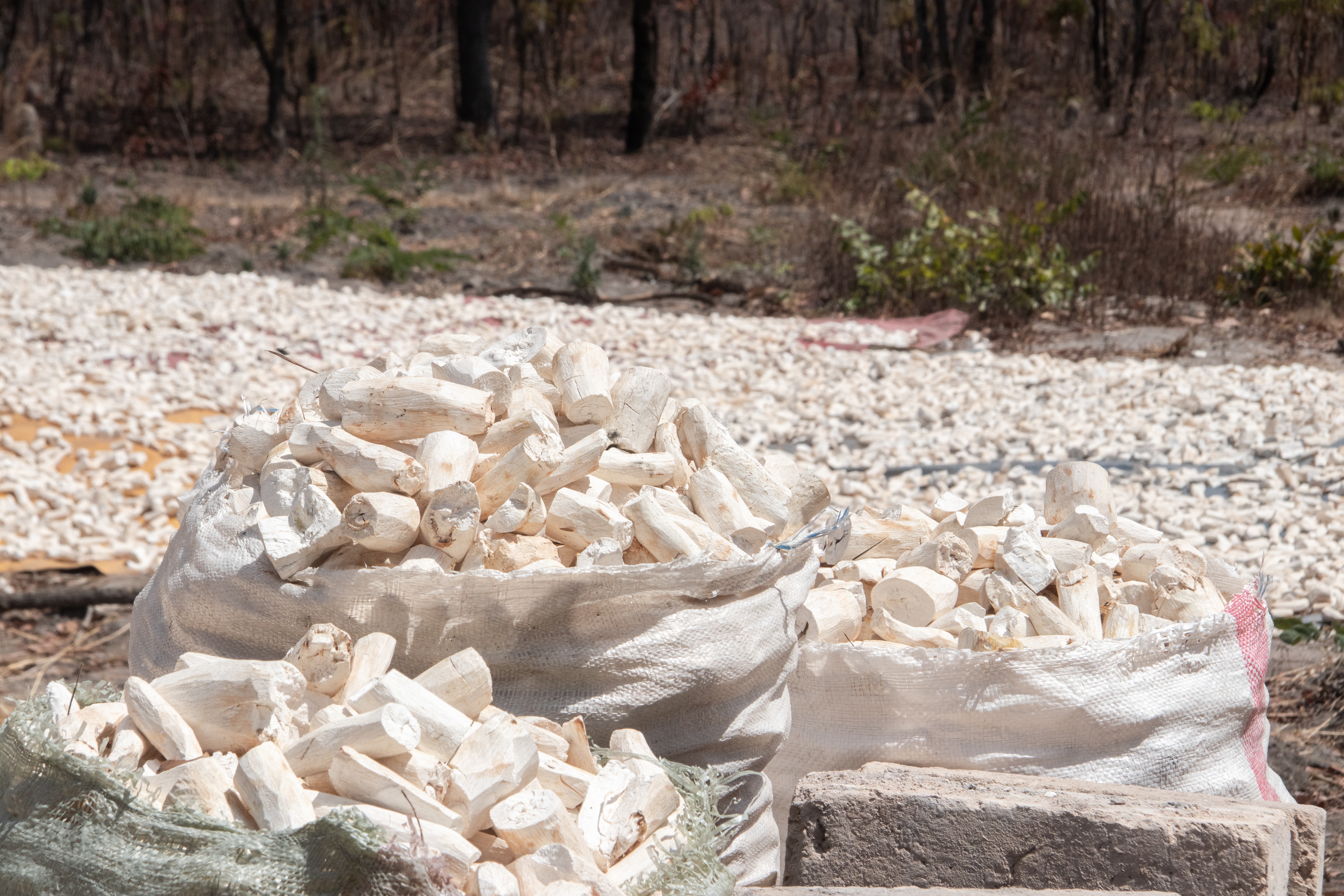
Cassava Post Harvest Deterioration
The roots of cassava are more perishable than other similar root crops such as sweet potato, yam, etc. Therefore, they must be quickly processed into a finished product so as to maximize the crop value.
Cassava can alternatively be processed into pellets for industries that deal with starch production and animal feeds or processed into flour.
Generally, post-harvest physiological deterioration begins to occur around 24 hours after the root tubers have been separated from the plant. For this reason, cassava should be harvested with a specific goal in mind, either immediate consumption or sales to local cassava traders and exporters.
Featured picture credit: ©2014 CIAT/GeorginaSmith

